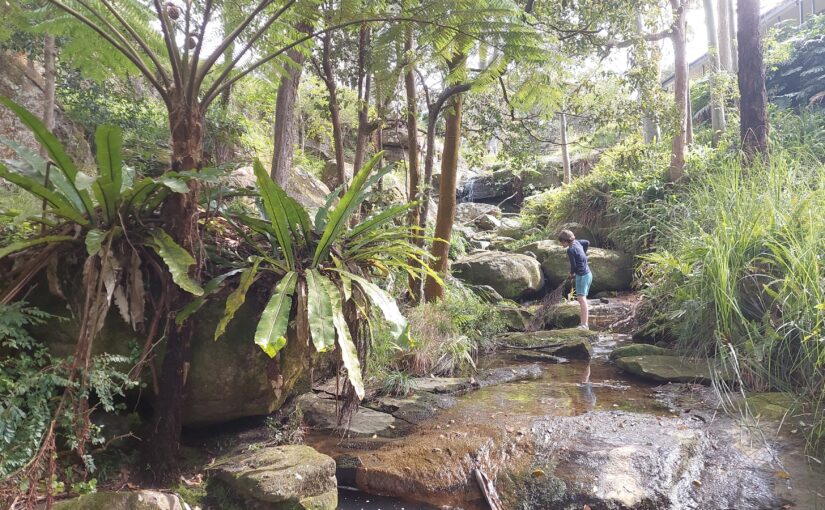Perfect weather to do some bush regeneration yesterday.
No rain but the ground has had a good soaking so the weeds couldn’t put up much of a fight when being pulled out.
From my last few visits, I knew a lot more work was required to recover from the neglect of the last few years.
First step: An action plan. I moved around the reserve and tried to list the sections that required attention.
| This stand of ginger lilly and palm grass continues to grow. It needs to be controlled while a native such as native ginger is allowed planted and encouraged. |
|
|
| These Sydney golden wattles were planted only four or five years ago but currently appear to be struggling or dead. Though it is hard to see in this photo, there around about eight Cheese trees which were planted a few years ago. They appear healthy but are clearly failing to make progress against the heavy clay soil. I still hold hope that some of them will find a way to expand their roots to allow more growth. The grass needs to be removed or thinned to allow new growth to have a chance. |
|
|
| First falls is going well. A tree fern and some sandpaper figs are now growing out of the cliff face. |
|
|
| On the south bank, besides first fall, there is some clean up to be done. Fishbone fern is starting to appear, croften weed is still popping up and the privet tree has bounced back. Still, it is mostly in good nick. An hour or so of work should have this area back in good order. |
|
|
| On the south bank, just before the Fern wall, a section of bank is soil rather than the usual rock. Palm grass has taken hold and needs to be addressed. This is true for the entire creek. I imagine an entire day will need to be devoted to removing palm grass. |
|
|
| As a whole though, the section of creek between first and second falls is not all bad. A lot of endemic ferns are going well, the Gahnia on the north bank is more established than ever and most of the visible trees are meant to be there. The issues are the palm grass, the swedish ivy and the fishbone fern. Each of these will take quite some time to address |
|
|
|
|
|
|
| Fern wall, on the south bank between the first and second falls looks good but some bird nest ferns have gone ‘missing’. We have had people steal bird nest ferns in the past and I suspect it has happened again. I can’t be sure until I locate previous images. The ferns that are still there are going spectactular. The tree fern has shot up, as have other tree ferns at other locations. Conditions must of been just right for this species. |
|
|
|
|
| Besides Fern wall though is the swedish ivy that is yet to be removed. Areas that have been done are still clear though so that is a good sign that it can be fully removed. |
|
|
|
|
|
At the top of Second fall, things look mostly ok. There is still privot, palm grass and fishbone fern to address but it is good to see the weeds have not jumped back quickly into this area. |
|
|
| Cabbage tree palm is looking good after some shading trees were removed from a nearby property. |
 |
| Simlarly for the bank behind 16 Green Valley Rd. |
 |
| This photo shows some of the bleeding hearts that have been pushed over. Hopefully more will grow when the fishbone fern is removed. |
 |
| There is a stretch of poisoned lantana at 16 Green Valley Rd. I am not sure what the purpose is. |
 |
| This area is kept clear by the property owners above. |
 |
| Lots of privet in this area towards the creek as well. |
 |
| One positive discovery was finding this poison peach tree. There were also some young sapling nearby. I was able to free them from the lantana which was starting to get on top of it. It is about three metres tall. |
 This poison peach tree and some younger saplings was covered in lantana. It is about three metres in height |
| A wall of privet… |
 |
| But amongst it… |
 |
 |
 |
 |
 |
 |
 |
 |
 |
 |
 |
 |
 |
 |
 |
 |
 |
 |
After this point I went along my usual route along the creek back to the track that leads to site A but it was so infested with lantana and the privet it was a battle to move and taking any photos was not really an option. It is going to take a lot of time to get it back to the state I had it at a few years back.


























